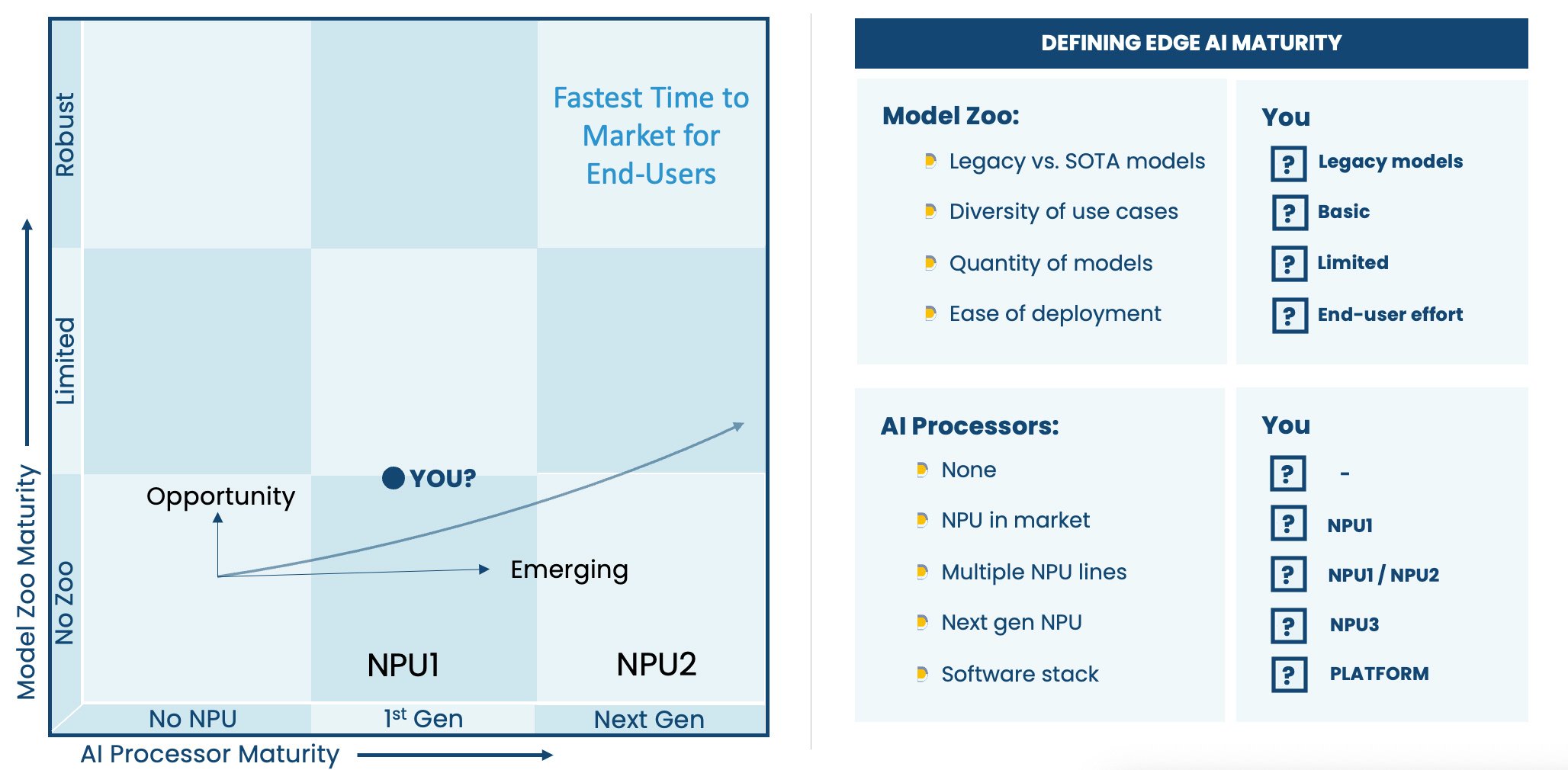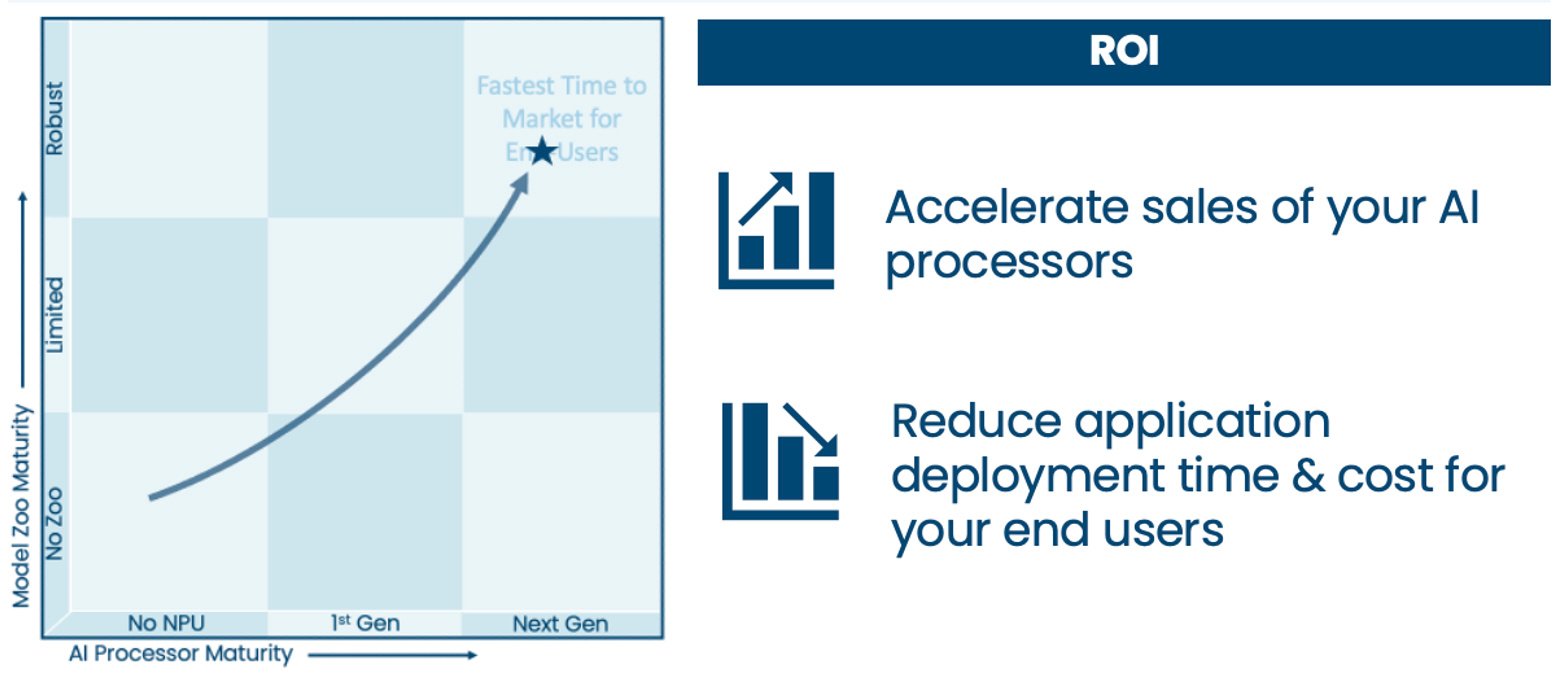The rapid advancements in AI have revolutionized various industries, promising enhanced productivity and innovation. However, deploying AI models on AI processors presents significant challenges, impacting the sales of these processors. This blog explores these challenges and how semiconductor companies can address them to accelerate AI processor sales and drive ROI.
Read the full article on Medium here or download the white paper.
The Shift from Traditional Applications to AI
Historically, end-users wrote their own code for custom applications on processors. With AI, the model itself is the application. End-users now focus on getting pre-built models to run on target hardware at the performance KPIs required by the application, which introduces new challenges.
Challenges in Edge AI
- Technical Complexity: Deploying AI models involves multiple steps, including model and hardware selection, architecture modification, and optimization, delaying time to market.
- Compatibility Issues: AI models are often developed independently from the hardware, requiring extensive modifications to work with the latest processors.
- Resource Constraints: Limited processing power, energy consumption, and memory capacity make it challenging to deploy sophisticated AI models on edge devices.
- Data Challenges: Collecting and preparing the right data for training AI models is crucial for achieving high accuracy.
Impact on Chip Sales
Delays in application delivery slow down the sales cycle for AI processors, reducing revenue and ROI for semiconductor companies. Addressing these deployment challenges is essential for capturing the full value of AI technology.
Introducing the Edge AI Maturity Landscape
Deeplite's Edge AI Maturity Landscape is a simple tool designed to help provide a high-level assessment of the edge AI maturity of semiconductor companies. The Landscape considers edge AI maturity based on 2 dimensions; AI processor maturity and AI model maturity. It is not uncommon for leading semiconductor companies that are strong on AI processor maturity having work to do to improve AI model maturity.

Best Practices for Enhancing Model Zoo Maturity
- Robust SOTA Models: Curate a robust library of pre-optimized, commercially viable models for various applications that work with the target AI processor.
- Unambiguous Benchmarks: Provide benchmarks for the AI processor for the pre-optimized model zoo so end-users can easily find models that align with their application KPIs
- Integrated Development Environment: Provide a platform for model selection, fine-tuning, and deployment.
- Pre-Built Post-Processing Code: Include pre-built code to expedite deployment.
- Synthetic Data Generation Tools: Enhance model accuracy with tools for synthetic data generation and localized learning.
Accelerating AI Processor Sales and ROI
By providing a comprehensive set of pre-optimized models for their AI processors along with the tools for fine-tuning and deployment for their customers, semiconductor companies will accelerate the time to market for AI applications, driving revenue and ROI for both them and their end users.
